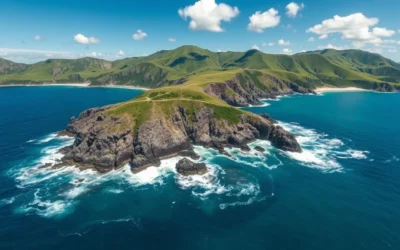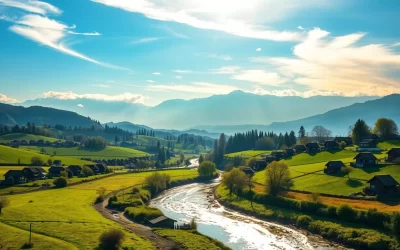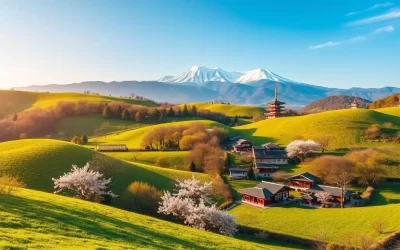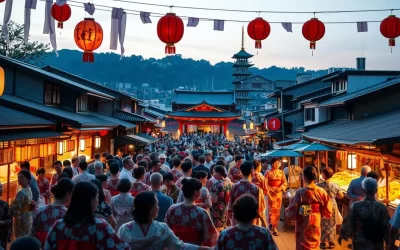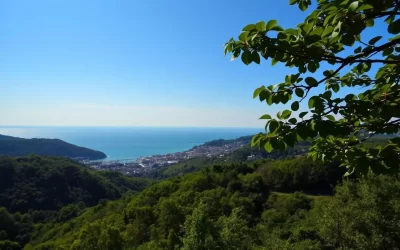Planning a trip to Kumamoto Prefecture in Japan can be a thrilling experience, with its rich history, stunning natural beauty, and vibrant culture. To make the most of your visit, understanding the local weather and seasonal attractions is crucial.
The time of year you choose to visit can significantly impact your experience. With distinct seasons, Kumamoto offers a unique charm throughout the year. Whether you’re looking forward to enjoying the beautiful scenery or participating in local events, being aware of the weather conditions will help you prepare.
By identifying the best months to visit, you can plan a trip that aligns with your preferences, ensuring a memorable and enjoyable experience in this captivating region of Japan.
Understanding Kumamoto’s Climate and Seasons
Understanding Kumamoto’s climate requires knowledge of its geographic influences and seasonal changes. Kumamoto Prefecture, situated on Kyushu Island, is characterized by a diverse climate due to its varied topography.
Geographic Influences on Kumamoto’s Weather
The prefecture’s climate is significantly influenced by its location, with the Aso volcanic region creating unique microclimates. The varied topography, from coastal plains to mountainous regions, results in diverse weather patterns even within short distances.
The Four Distinct Seasons of Kumamoto
Kumamoto experiences four distinct seasons, each offering different attractions and weather conditions. Temperatures range from cool winters (averaging 5-10°C) to hot, humid summers (often exceeding 30°C), with spring and fall offering the most comfortable climate conditions throughout the year.
- The Aso volcanic region creates unique microclimates throughout the area.
- The prefecture’s varied topography results in diverse weather patterns.
- Kumamoto experiences four distinct seasons.
- Temperatures vary significantly across the seasons.
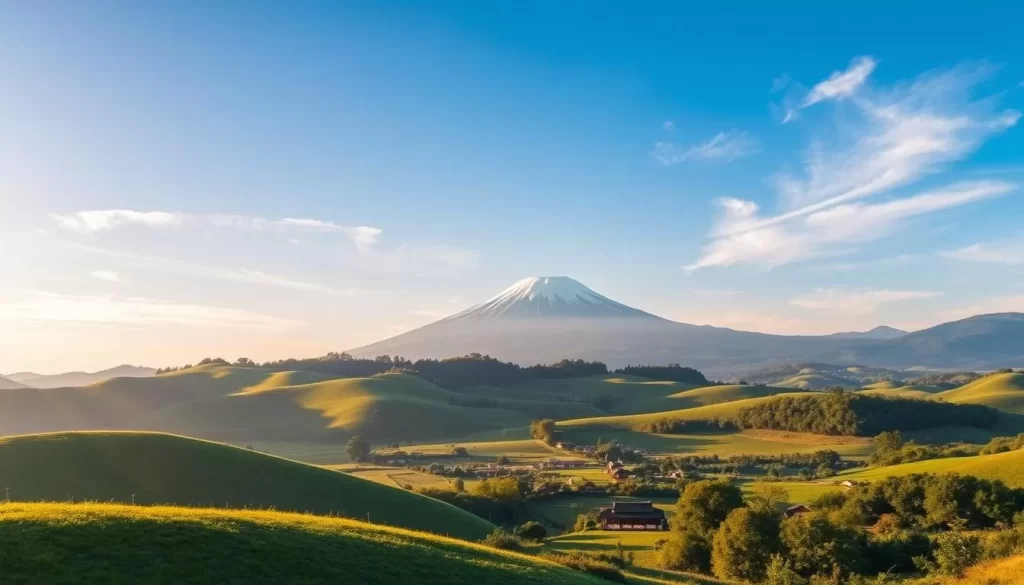
Spring in Kumamoto: Cherry Blossom Paradise
The beauty of spring is on full display in Kumamoto, with its picturesque landscapes and vibrant cherry blossoms. As the season progresses, the prefecture transforms into a breathtaking landscape.
Early Blooms and Warming Temperatures
March brings the first signs of spring with gradually warming temperatures (10-15°C) and early blooms appearing in southern parts of the prefecture.
Peak Cherry Blossom Season
April marks the height of cherry blossom season in Kumamoto, when hanami (flower viewing) parties become a daily occurrence. The prefecture buzzes with festive energy and cultural celebrations.
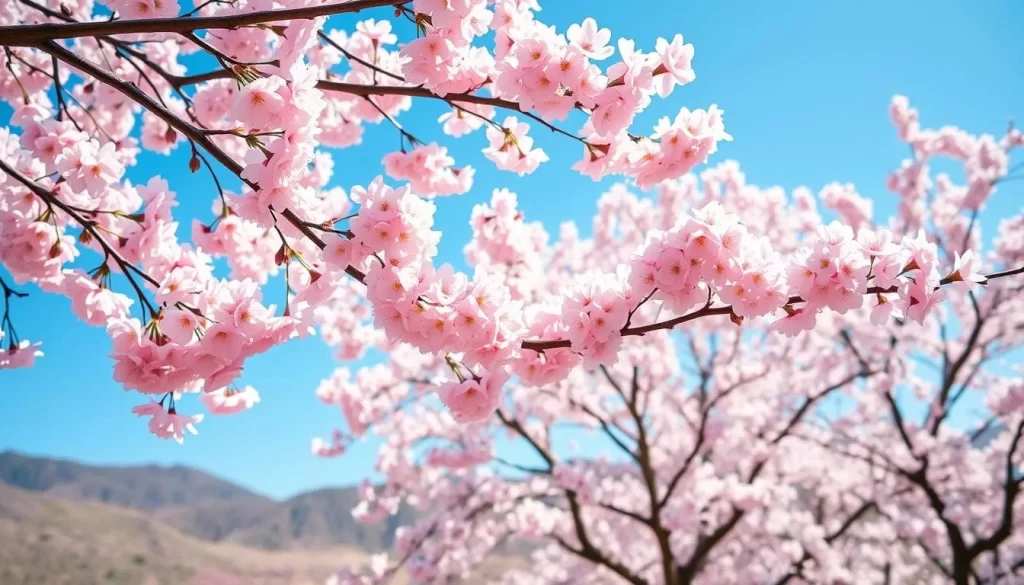
Pleasant Weather and Spring Festivals
May offers some of the most pleasant weather of the year with temperatures between 15-23°C, perfect for outdoor exploration. Spring festivals throughout Kumamoto celebrate the season‘s renewal.
Throughout spring, Kumamoto’s beauty is on full display, making it an ideal time to visit and experience the prefecture’s natural wonders and cultural heritage.
Summer in Kumamoto: Festivals and Natural Retreats
Summer in Kumamoto is a season of contrasts, featuring both sweltering heat and refreshing natural escapes. As you plan your trip, it’s essential to be aware of the seasonal characteristics and how they might impact your travel plans.
June: Early Summer and the Rainy Season
June marks the beginning of the rainy season (tsuyu) in Kumamoto, characterized by increased humidity and regular rainfall. Despite the rain, temperatures remain pleasant, ranging from 20-25°C, making it an ideal time to explore indoor attractions and museums.
July: Hot Weather and Cultural Celebrations
In July, temperatures climb to 28-32°C with high humidity, but it’s also when Kumamoto comes alive with spectacular festivals, including the famous Yamaga Lantern Festival. These cultural celebrations offer unique experiences that showcase the region’s heritage.
August: Peak Heat and Typhoon Considerations
August brings peak summer heat, often exceeding 33°C, and marks the beginning of typhoon season. It’s crucial to stay informed about weather forecasts and plan your outdoor activities accordingly to ensure a safe and enjoyable trip.
Despite the challenges posed by the summer weather, the season offers opportunities to experience Kumamoto’s natural beauty, such as the cooler mountain areas around Mount Aso and refreshing waterfall hikes, providing relief from the heat.
Autumn in Kumamoto: Colorful Foliage and Mild Weather
As autumn descends upon Kumamoto, the landscape transforms into a kaleidoscope of colors. The fall foliage is a major highlight, with maple and ginkgo trees displaying their spectacular colors.
September: Transitional Weather and Fewer Crowds
September marks the beginning of autumn in Kumamoto, with transitional weather that gradually cools down from the summer highs to a comfortable 20-25°C. The crowds thin out, giving you more space to explore popular attractions.
October: Fall Foliage and Harvest Festivals
October is prime time for fall foliage viewing in Kumamoto, especially in mountainous areas like Mount Aso. The season coincides with harvest festivals that celebrate local cuisine and agricultural traditions.
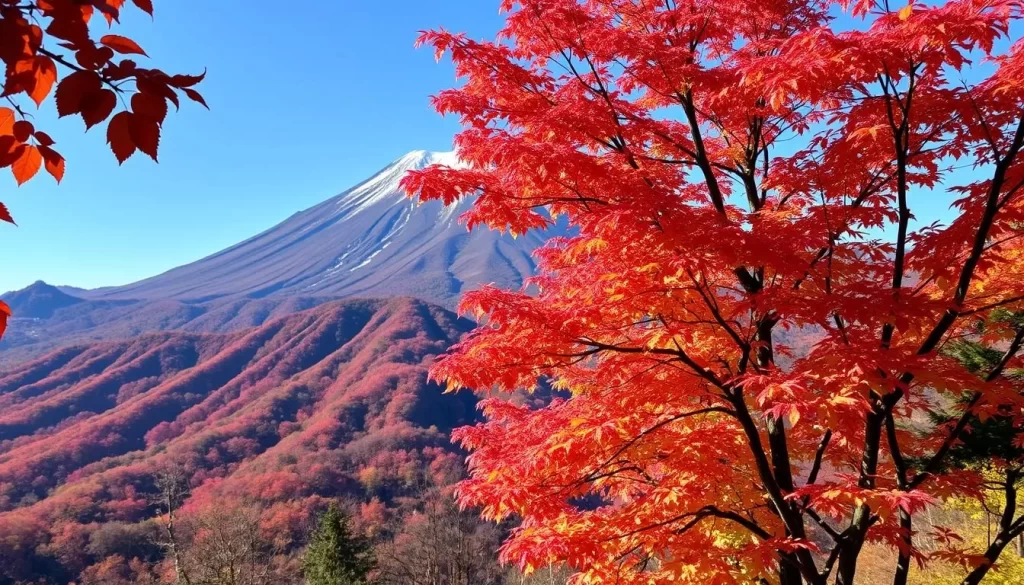
November: Cooler Temperatures and Late Autumn Beauty
November brings cooler temperatures (10-18°C) and late autumn beauty, with the foliage colors reaching their peak in lower elevations. The mild weather and clear skies make it ideal for hiking and outdoor activities.
Autumn’s mild weather and clear skies make it an ideal time for exploring Kumamoto’s natural landscapes, visiting outdoor hot springs, and enjoying the prefecture’s beauty without the discomfort of summer heat or winter chill.
Winter in Kumamoto: Mild Temperatures and Hot Springs
Winter in Kumamoto is a treat for those who enjoy mild weather, festive celebrations, and rejuvenating hot springs. You can experience the prefecture’s unique winter charm, characterized by comfortable temperatures and picturesque landscapes.
December: Early Winter and Holiday Celebrations
December brings holiday illuminations and year-end celebrations throughout Kumamoto. Temperatures range from 5-15°C, with occasional light snowfall in mountainous regions, creating a picturesque winter scenery. You can enjoy the festive atmosphere and explore the prefecture’s winter landscapes.
January: Coldest Month and Winter Activities
January is typically the coldest month in Kumamoto, with temperatures averaging 3-12°C. However, the clear skies make it an ideal time to enjoy the prefecture’s famous hot springs (onsen) amid winter landscapes. You can relax in natural hot springs, rejuvenating your body and mind.
February: Winter Festivals and Early Spring Preparations
February sees winter festivals celebrating local traditions, while early plum blossoms begin to appear by month’s end, signaling the approaching spring. You can experience the unique blend of winter and spring, creating a beautiful contrast against the winter backdrop.
Kumamoto Prefecture, Japan: Best Months for a Weather-Savvy Trip
To make the most of your trip to Kumamoto, it’s essential to know the best months to visit based on weather conditions. The prefecture experiences a temperate climate with distinct seasons, each offering unique experiences and attractions.
March-April: Cherry Blossom Season
Spring is a wonderful time to visit Kumamoto, with cherry blossom season being a major highlight. Late March to mid-April is ideal for witnessing the iconic hanami (flower viewing) under blooming sakura trees. Popular spots include Kumamoto Castle and Suizenji Garden, making for an unforgettable experience.
October-November: Fall Foliage Season
Autumn in Kumamoto is equally breathtaking, with fall foliage transforming the landscape into a kaleidoscope of colors. Mid-October to late November is the perfect time to enjoy the vibrant hues of maple and ginkgo trees, ideal for photography and outdoor exploration.
Avoiding Typhoon Season and Rainy Periods
While Kumamoto’s climate is generally pleasant, there are periods to avoid for outdoor activities. The typhoon season from August to early October and the rainy season from June to mid-July can disrupt travel plans. Planning your visit around these periods ensures a smoother and more enjoyable trip.
| Best Time to Visit | Weather Conditions | Activities |
|---|---|---|
| March-April | Mild temperatures | Cherry blossom viewing |
| October-November | Comfortable temperatures | Fall foliage, outdoor exploration |
| June-July | Rainy | Avoid outdoor activities |
| August-October | Typhoon risk | Avoid travel if possible |
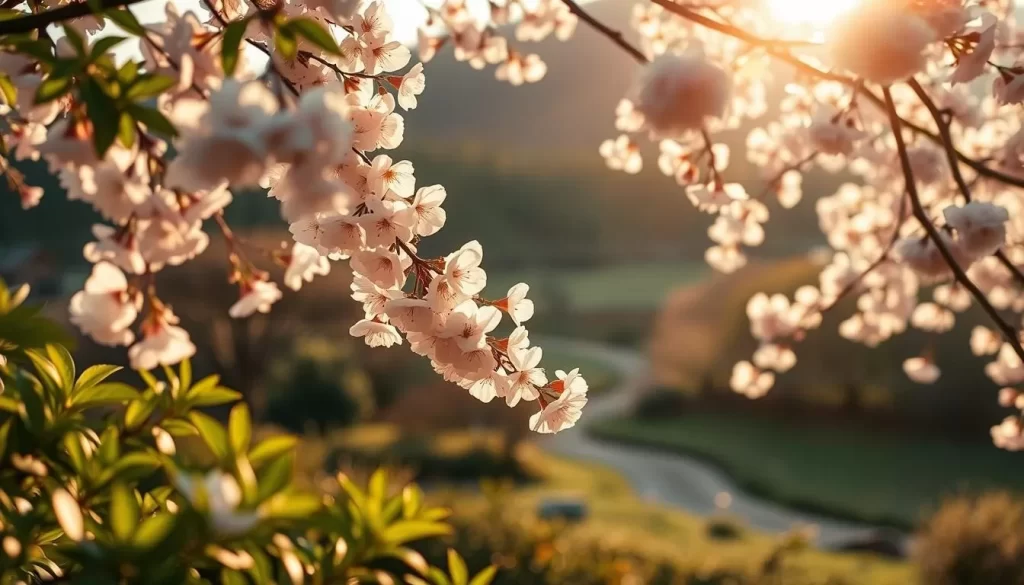
Regional Weather Variations Within Kumamoto Prefecture
Understanding the regional weather variations is crucial for planning a trip to Kumamoto Prefecture. The diverse geography of the area, which includes both coastal regions and mountainous areas, contributes to a range of different weather patterns.
Coastal Areas vs. Mountainous Regions
The coastal areas of Kumamoto Prefecture generally enjoy milder temperatures throughout the year, with less extreme seasonal changes. In contrast, the mountainous regions experience cooler temperatures and more pronounced seasonal variations. This difference is significant when planning activities such as hiking or visiting hot springs.
Microclimates Around Mount Aso
Mount Aso, being Japan’s largest active volcano, creates unique microclimates in its vicinity. The caldera often experiences different weather conditions compared to the surrounding areas, including temperature inversions and localized precipitation patterns. This makes the area around Mount Aso particularly interesting for weather-conscious travelers.
| Region | Typical Weather | Recommended Activities |
|---|---|---|
| Coastal Areas | Mild temperatures, less extreme seasonal changes | Beach activities, coastal sightseeing |
| Mountainous Regions | Cooler temperatures, more pronounced seasonal variations | Hiking, mountain biking, hot springs |
| Mount Aso Area | Unique microclimates, temperature inversions | Volcano tours, nature exploration |
Essential Packing Tips for Each Season in Kumamoto
Preparing for your trip to Kumamoto involves understanding the seasonal weather to pack the right clothing. This will significantly enhance your comfort and enjoyment during your trip, allowing you to focus on experiences rather than weather challenges.
Spring and Fall Essentials
For visits during spring and fall, layering is essential as temperatures can fluctuate significantly between morning, afternoon, and evening. You should pack light jackets, cardigans, comfortable walking shoes, and a light scarf for versatility. In spring, it’s still a bit chilly, especially in the mornings and evenings, so it’s wise to bring a light jacket and scarf to keep cozy.
Summer Weather Gear
Summer in Kumamoto demands lightweight, breathable clothing, UV protection (such as sunscreen, a hat, and sunglasses), a portable fan, and quick-dry fabrics. Comfortable walking shoes that can handle hot pavement are also a must. Don’t forget to pack these essentials to stay cool and comfortable during your summer visit.

Winter Packing List
For winter travelers, it’s advisable to pack thermal layers, a medium-weight coat (since Kumamoto’s winters are milder than northern Japan), gloves, scarves, and comfortable waterproof shoes. Moisturizer for dry winter air is also recommended. Regardless of the season, always include a small umbrella or packable rain jacket, as Kumamoto can experience precipitation year-round.
Top Weather-Dependent Attractions in Kumamoto
From natural wonders to historical landmarks, Kumamoto’s attractions are best enjoyed when the weather is taken into consideration. The city’s top attractions offer different experiences depending on the seasons and weather conditions, making timing crucial for maximizing your enjoyment of these spectacular spots.
Mount Aso and Volcanic Landscapes
Mount Aso, Japan’s largest active volcano, offers breathtaking volcanic landscapes best visited during clear weather in spring or fall when visibility is optimal and trails are accessible. Be sure to check volcanic activity reports before planning your visit.
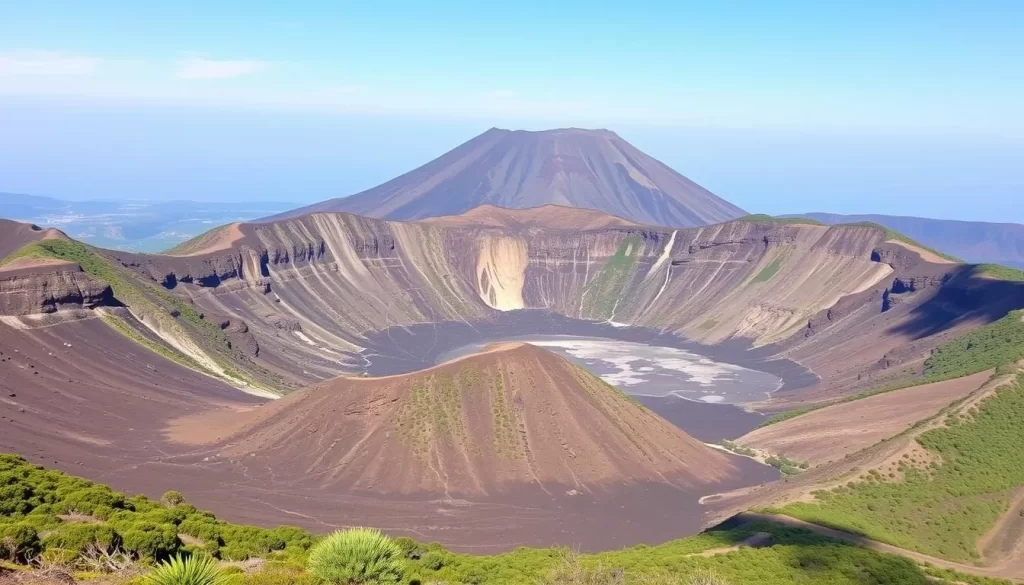
Kumamoto Castle Through the Seasons
Kumamoto Castle, one of Japan’s most impressive feudal castles, transforms with the seasons—surrounded by cherry blossoms in spring, lush greenery in summer, vibrant foliage in fall, and occasional light snow in winter. The castle’s beauty is a must-see in every season.
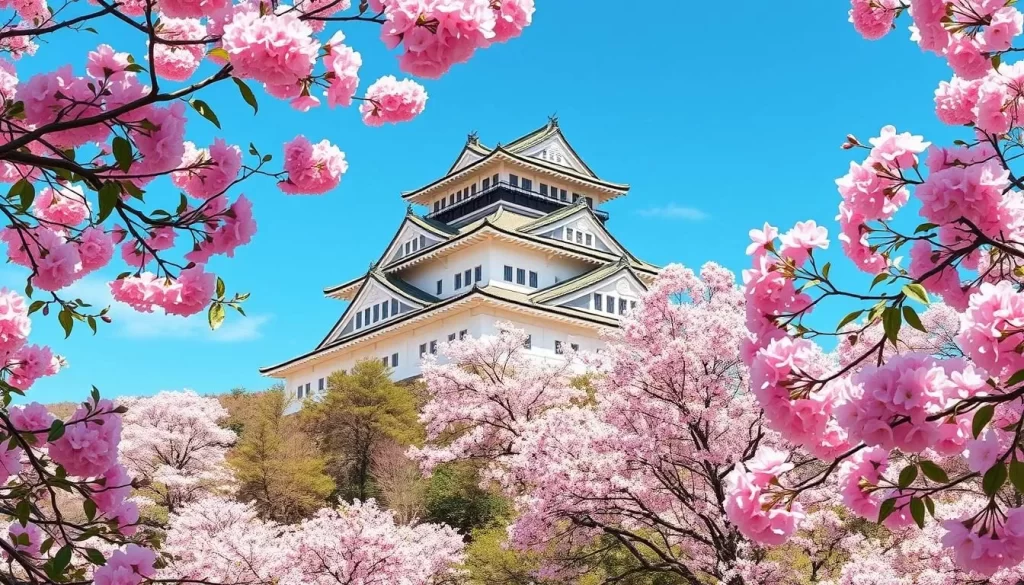
Natural Hot Springs and Onsen Experiences
The prefecture’s natural hot springs (onsen) provide year-round enjoyment but are especially magical during cooler months when the contrast between the cold air and hot mineral waters creates a memorable sensory experience. Visiting these places can be a great way to relax and unwind.
Seasonal Festivals and Events in Kumamoto
Kumamoto’s cultural scene is highlighted by its diverse and lively festivals and events across the seasons. You can experience the rich cultural heritage of the prefecture through various celebrations that take place throughout the year.
Spring Celebrations
In the spring, cherry blossom festivals are a major highlight, with events at Kumamoto Castle and various parks. People gather for hanami parties, enjoying traditional performances and seasonal food stalls serving sakura-themed treats. This is a special time to experience the beauty of spring in Kumamoto.
Summer Matsuri Festivals
Summer brings energetic matsuri festivals featuring spectacular processions, traditional dance performances, and taiko drumming. The warm summer evenings are illuminated by vibrant night markets with lanterns and food stalls, making it a lively season for people to enjoy.
Autumn and Winter Events
As autumn arrives, the prefecture celebrates the harvest season with moon-viewing parties and agricultural festivals. In the winter, events like New Year’s celebrations and illumination events create a magical atmosphere, showcasing traditional Japanese customs and the beauty of the season.
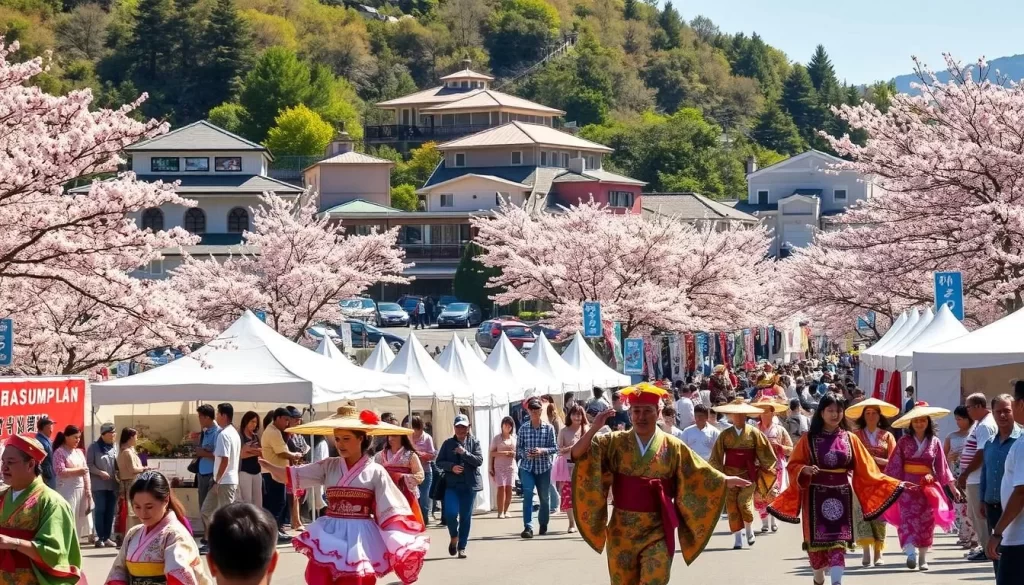
Weather Considerations for Day Trips from Kumamoto
As you plan your day trips from Kumamoto, keep in mind that weather conditions can significantly impact your experience. The city’s proximity to the sea and its surrounding geography create varied weather patterns across different areas.
Exploring Nearby Prefectures
When venturing into nearby prefectures like Kagoshima, Miyazaki, or Fukuoka, it’s essential to check regional weather forecasts. Conditions can differ substantially even within a short distance, particularly during transitional seasons. This foresight will help you make the most of your trips.
Coastal Excursions and Mountain Adventures
For coastal excursions to places like Amakusa Islands or Ashikita, clear days without strong winds are ideal. Always check marine forecasts before planning boat tours or water activities. For mountain adventures, such as visiting Mount Aso or Kuju Mountains, be prepared for rapidly changing conditions at higher elevations. Morning visits often provide clearer views.
| Destination | Ideal Weather | Activity |
|---|---|---|
| Amakusa Islands | Clear, no strong winds | Boat tours, marine activities |
| Mount Aso | Clear morning skies | Hiking, sightseeing |
| Ashikita | Calm seas | Coastal activities |
Conclusion: Planning Your Weather-Perfect Trip to Kumamoto
Kumamoto’s diverse beauty is accessible year-round, but knowing when to visit enhances your experience. The best time to visit depends on your preferences, whether you’re drawn to cherry blossoms in spring or autumn foliage. Spring and fall offer comfortable weather and spectacular natural beauty, making them popular among visitors. Summer brings vibrant cultural festivals, while winter offers a tranquil experience with hot springs. Understanding the seasonal weather patterns helps you plan activities and avoid crowds. By choosing the right time for your trip, you can create a memorable journey through this diverse Japanese prefecture.
The above is subject to change.
Check back often to TRAVEL.COM for the latest travel tips and deals.

